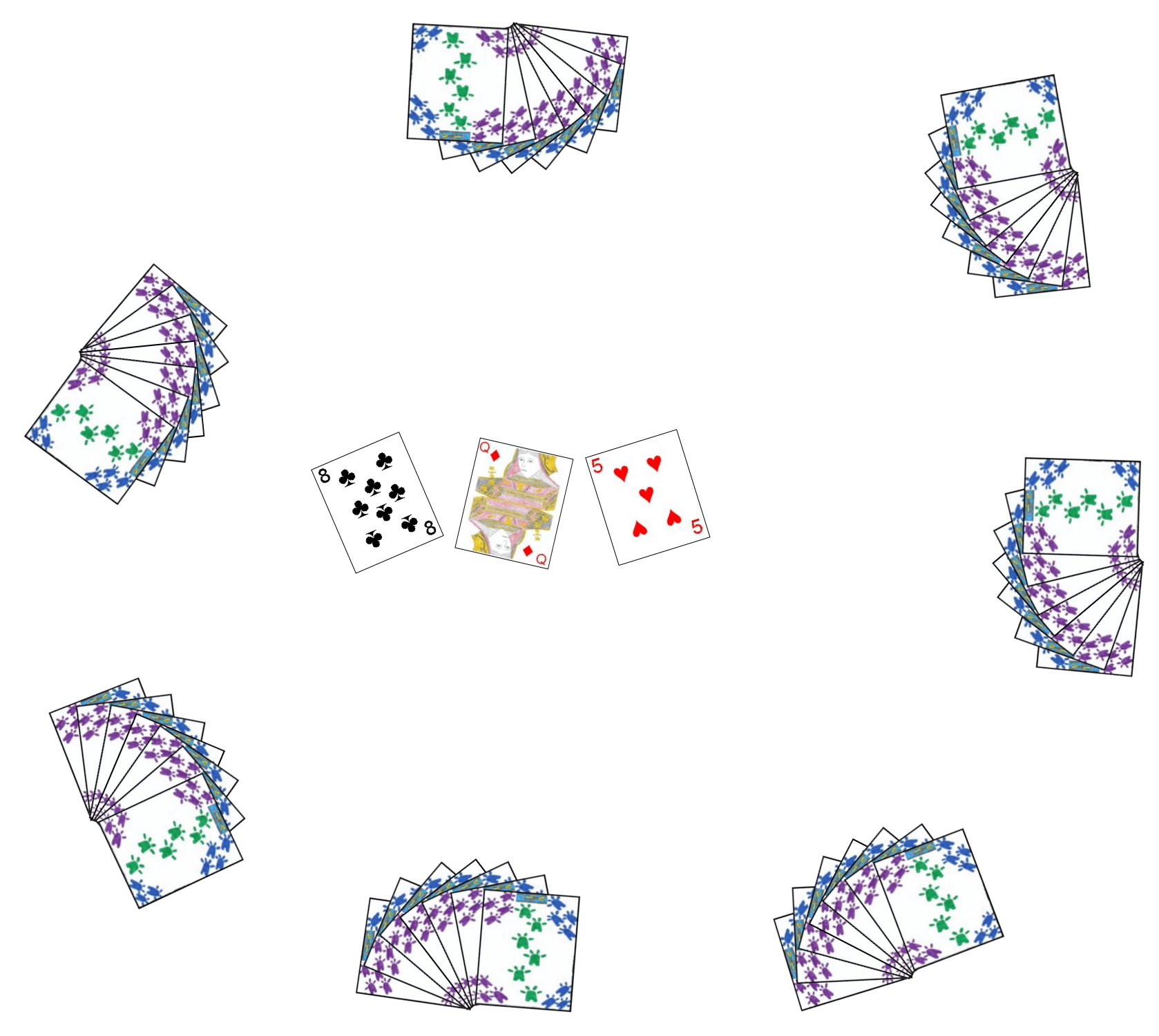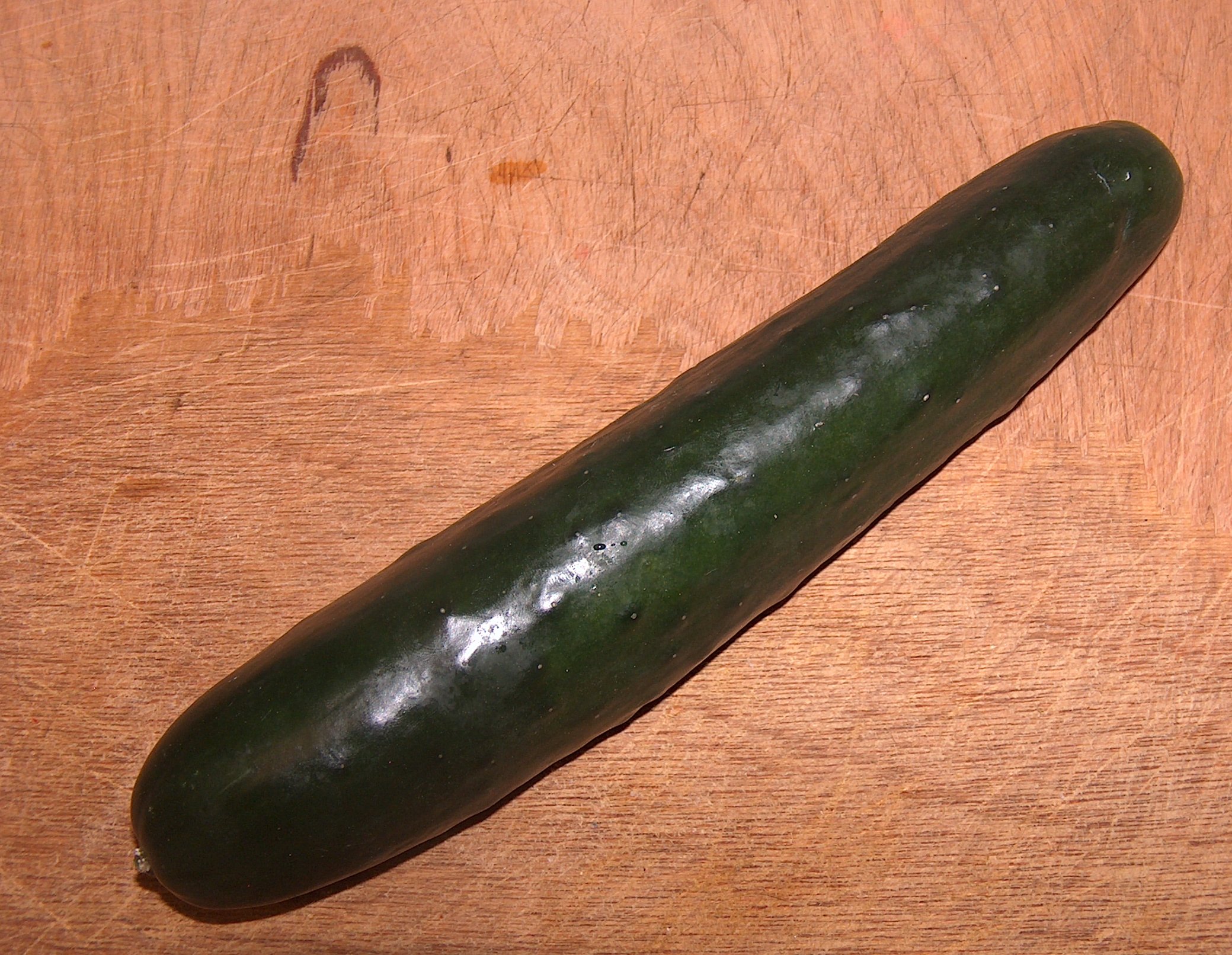 Cucumber is a fun trick taking card game with a unique twist. This game originated in Denmark and is also known as Agurk, the Danish word for cucumber. The unique feature of this game is that players score nothing for winning individual tricks but instead, try to avoid winning the last trick of each hand. This game is designed to be played by 2 to 7 players.
Cucumber is a fun trick taking card game with a unique twist. This game originated in Denmark and is also known as Agurk, the Danish word for cucumber. The unique feature of this game is that players score nothing for winning individual tricks but instead, try to avoid winning the last trick of each hand. This game is designed to be played by 2 to 7 players.Cucumber uses one standard 52 card deck. The ranking of the cards in this game are as follows (from high to low); Ace, King, Queen, Jack, 10, 9, 8, 7, 6, 5, 4, 3, 2. The suits of the cards are irrelevant when playing Cucumber.
The first dealer can be determined in a variety of ways. One common method to use for this game is to have any player begin dealing cards face-up from a shuffled deck in a clockwise rotation. The first player to receive a Jack is designated the first dealer. Thereafter, the deal rotates in a clockwise rotation around the table. If a player whose turn it is to deal is no longer in the game (due to being eliminated in play as described below), the deal passes to the next player who is still active in the current game.
Once the dealer is determined, he then shuffles the pack and deals one card at a time to each player in a clockwise rotation until each player has a total of seven cards. The remainder of the cards are then set aside, face down and will not be used for the rest of the hand. After each hand the deal rotates in a clockwise direction around the table.
Once the cards are dealt, the players then pick up their cards to begin play of the hand. The player to the dealer's immediate left plays the first card to the first trick. Each player in turn in a clockwise rotation then plays one card from his hand to the trick. Instead of playing cards to the center of the table, the players simply play the card face-up directly in front of themselves on the table. Since suits are irrelevant in this game, there is no need or obligation to play a card of the same suit as led to the trick (which is different from most other trick taking games). However, there are still specific rules on what cards can be played to a trick, as follows:
The player who leads the first card to a trick can play any card of his choice from his hand. The subsequent players to the same trick then have one of two choices of play to the trick.
- Any card from his hand of the same or higher rank than the highest currently found in the trick
- The lowest card currently remaining in the player's hand
A hand consists of seven total tricks played. The first six tricks played during the hand do not score any points for the winner of those tricks. However, the winner of the last trick of the hand scores a penalty based on the specific card he played on that last trick. The penalty points added to his score are calculated as per the following chart:
|
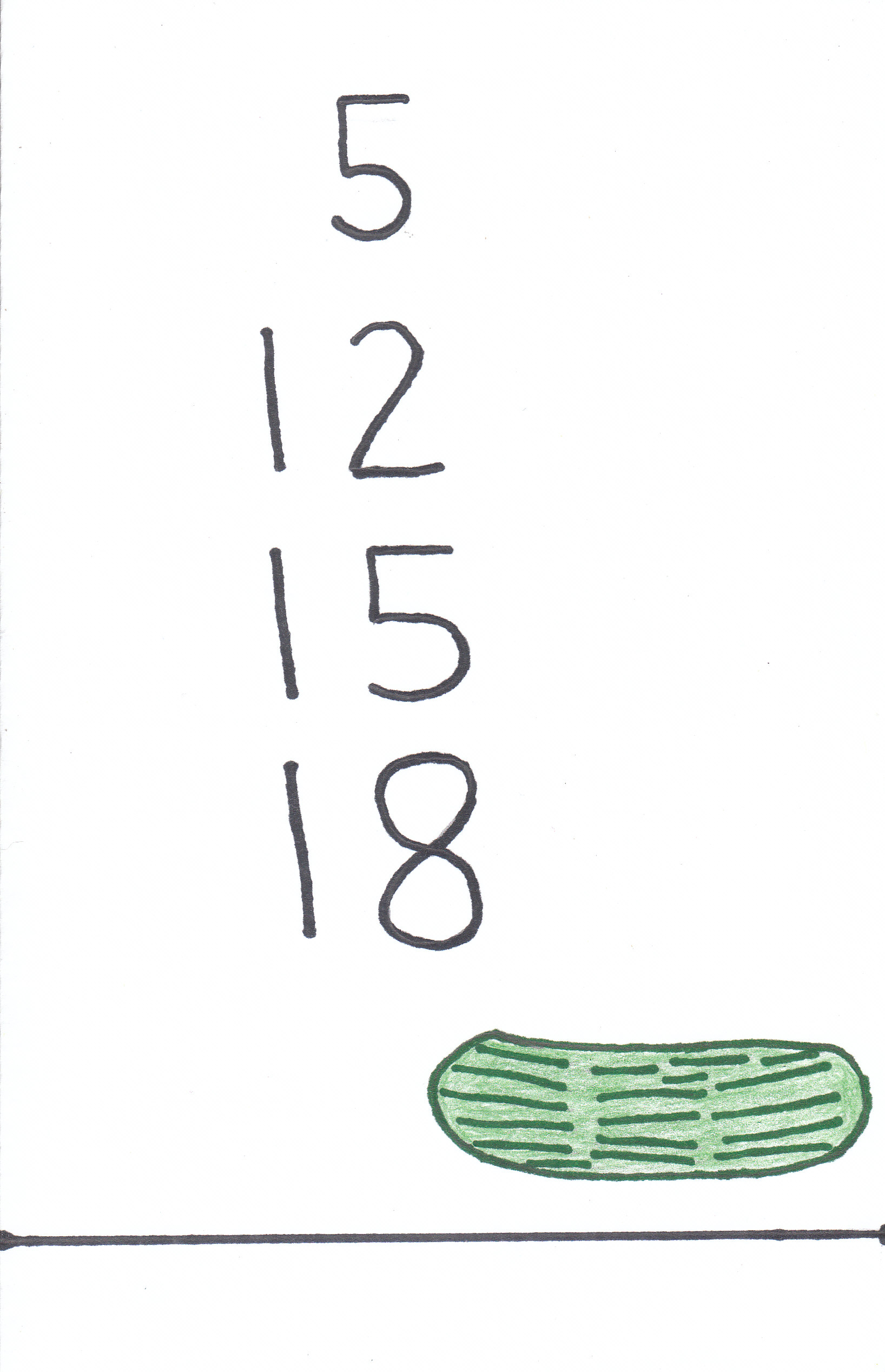 |
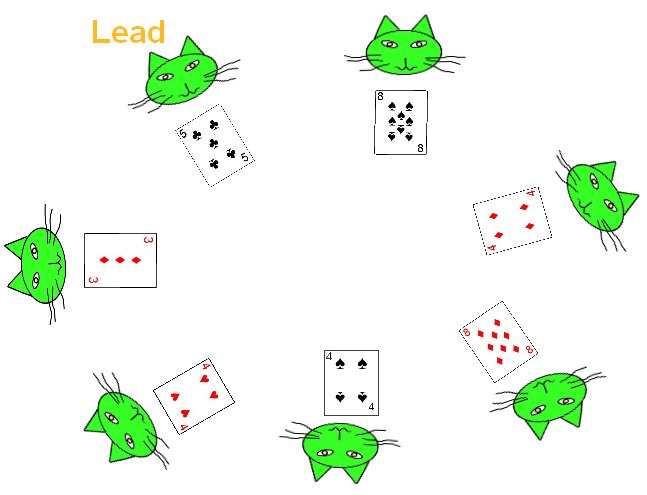 |
| In this example of a last trick, the Leader leads a five of Clubs. Since the two Eights are the highest cards played, the second of them played (Eight of Diamonds) wins the trick (scoring 8 points). The player of the first eight (Spades) would have a bonus of 8 points subtracted from their current score. |
Once a player reaches or exceeds 21 total accumulated points they earn one "cucumber". This is normally designated by drawing a small cucumber on the score sheet in that players column. When a player receives two cucumbers they are out of the game. When a player receives their first cucumber, they can resume playing after making the appropriate marking on the score sheet. They would re-enter the game with a score equal to the current, active player who has the highest score (but still below 21).
The game continues in this manner until there is just one player left at the end of a hand whom is declared the winner.
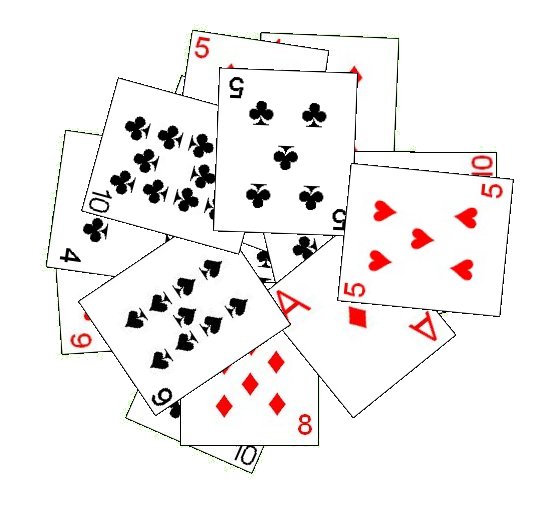 In the deal, each player receives six cards, which allows up to eight players to participate in a game.
In the deal, each player receives six cards, which allows up to eight players to participate in a game.
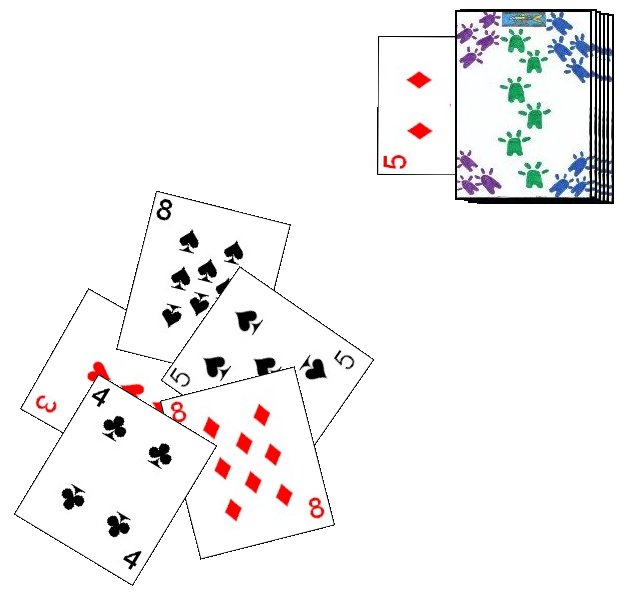
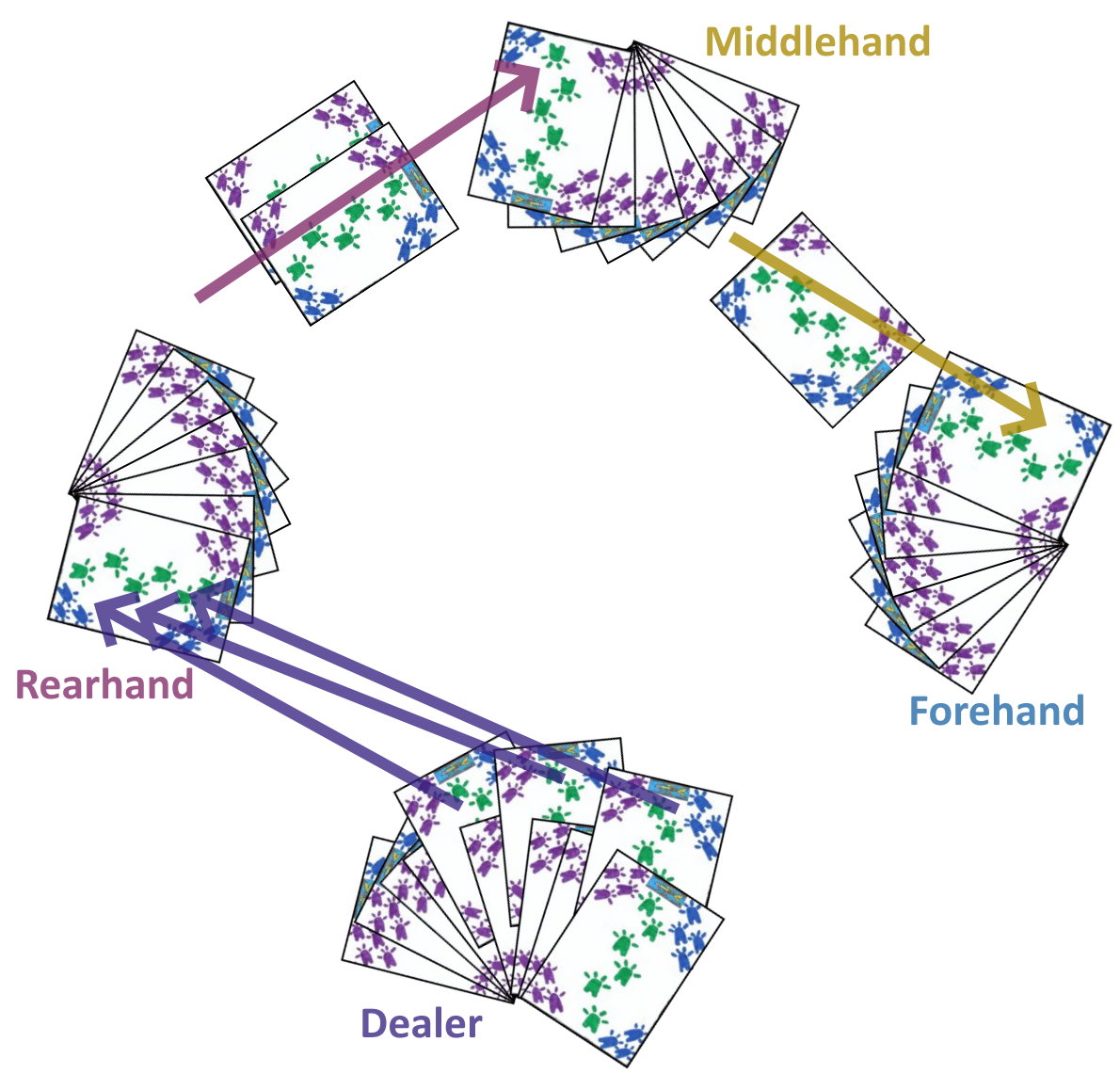 Letzter: Letzter is a German game in which the goal is to avoid winning the last trick of the hand. The name of this game translates from German to "Last One". Although having a very similar name to another German card game, Letzter Stich, these two games should not be confused as they have diametrically opposed goals. The rules for Letzter Stich can be found at this link.
Letzter: Letzter is a German game in which the goal is to avoid winning the last trick of the hand. The name of this game translates from German to "Last One". Although having a very similar name to another German card game, Letzter Stich, these two games should not be confused as they have diametrically opposed goals. The rules for Letzter Stich can be found at this link.
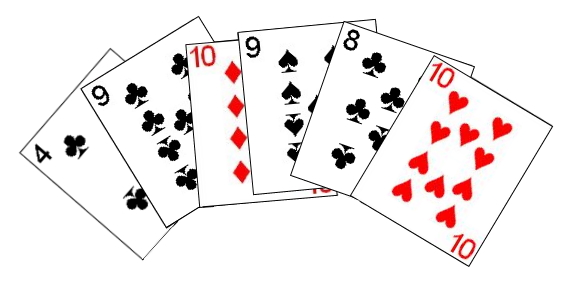 After the deal, each player may then pick up his hand for examination. The
dealer will then announce "Is it free?". If any player has a hand which contains
no court cards (Kings, Queens, or Jacks) in the hand, that player may discard his entire
hand to the side and receive an entirely new hand. A player is never required to
perform such a discard but has the option if preferred. After any players have
so requested an exchange of the hand, the dealer next announces "Doubles?". Any
player may then elect, regardless of the cards in his hand, to exchange his
entire hand for a new hand. Doing this, however, could impose stricter penalties
on that player should they be the player to win the last trick. If any players
elect doubles, and after that player or players receives the new hand, the dealer may ask those same players
"Redoubles?". Those players may again exchange the entire hand for a new had, but this will impose an even larger penalty if that player is to win the last trick of the hand.
After the deal, each player may then pick up his hand for examination. The
dealer will then announce "Is it free?". If any player has a hand which contains
no court cards (Kings, Queens, or Jacks) in the hand, that player may discard his entire
hand to the side and receive an entirely new hand. A player is never required to
perform such a discard but has the option if preferred. After any players have
so requested an exchange of the hand, the dealer next announces "Doubles?". Any
player may then elect, regardless of the cards in his hand, to exchange his
entire hand for a new hand. Doing this, however, could impose stricter penalties
on that player should they be the player to win the last trick. If any players
elect doubles, and after that player or players receives the new hand, the dealer may ask those same players
"Redoubles?". Those players may again exchange the entire hand for a new had, but this will impose an even larger penalty if that player is to win the last trick of the hand.
